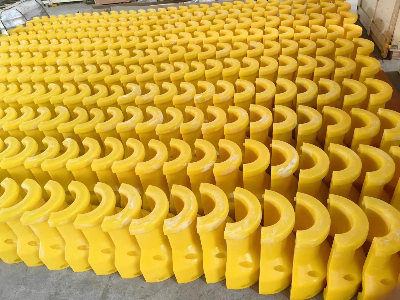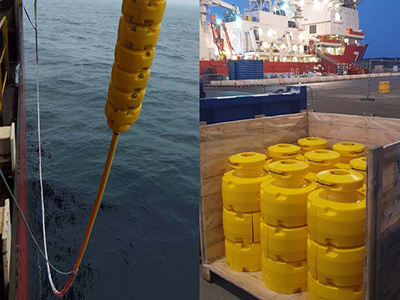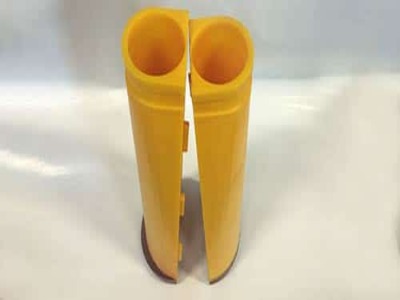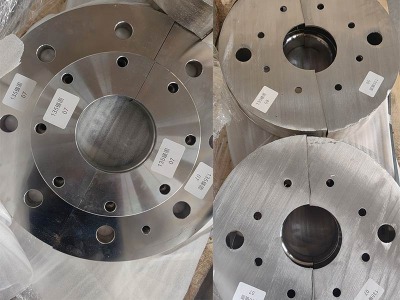Submarine Cable Protection for Offshore Wind Power in Vietnam
Submarine cable protection ( bending restrictor) made of polyurethane, with limited bending, anti-fatigue fracture, no diving maintenance required, 25-year service life, suitable for typhoons, Vietnam, and other regions with complex ocean changes.

Why submarine cable protection matters
In offshore wind farms, submarine power cables are exposed to harsh marine environments that include high salinity, strong wave motion, sediment shifts, and the risk of mechanical damage during both installation and long-term operation. These challenges are particularly relevant in Vietnam, where coastal weather patterns and monsoon seasons can place extreme strain on subsea infrastructure.
Unprotected cables are vulnerable to:
Over-bending during cable lay operations
Abrasion from seabed contact or movement
Fatigue caused by currents and tidal flow
Physical impact from marine vessels or dropped tools
Effective undersea cable protection helps prevent these issues, reducing downtime, minimizing repair costs, and extending the service life of wind power systems.
Structural features of offshore bending restrictors
One of the most commonly used protection devices in offshore wind farms is the bending restrictor. This component is specifically designed to control the bending radius of submarine cables and flexible pipes.
Key structural characteristics:
Symmetrical interlocking design: Composed of articulated vertebrae that interlock to allow movement within a set radius, while preventing over-bending. This structure is ideal for dynamic or semi-static applications.
Durable polyurethane material: Offers excellent resistance to corrosion, seawater, impact, and mechanical fatigue.
UV and chemical resistance: Ensures long-term stability even in surface or shallow-depth installations exposed to sunlight and marine chemicals.
Long service life: Typically rated for a 25-year operational lifespan, matching the life expectancy of offshore wind infrastructure.
Ease of installation: Modular segments can be assembled quickly, with minimal need for specialized tools or complex alignment.
Low maintenance: Once installed, the restrictors require little upkeep, making them ideal for remote or hard-to-access offshore locations.
Core function of bend restrictors in submarine cable protection
The primary function of bending restrictors is to avoid excessive bending of cables and flexible pipes, especially at vulnerable locations such as the transition zone between seabed and structure or where cables enter foundations, j-tubes, or i-tubes.
By maintaining the cable’s minimum bending radius, these devices:
Prevent mechanical fatigue and breakage
Reduce axial stress during tidal or current movement
Ensure stable cable positioning during and after installation
Improve long-term operational safety
Advantages of submarine cable protection in Vietnam's offshore wind sector
Vietnam’s unique marine geography and its rapidly expanding offshore wind ambitions make cable protection solutions particularly valuable. Here are key benefits:
Adaptation to harsh environments: Coastal Vietnam frequently experiences typhoons, seasonal monsoons, and high wave energy. Bend restrictors and protective conduits provide a mechanical buffer against these forces.
Support for floating and fixed platforms: Cable protection systems are versatile and can be used in both bottom-fixed and floating wind turbine foundations.
Enhanced infrastructure reliability: Reduces the risk of cable failure, which can lead to expensive downtime and difficult underwater repairs.
Long-term cost efficiency: Preventive protection avoids the much higher costs of unplanned maintenance and cable replacement.
Supports grid stability and energy delivery: By maintaining uninterrupted power flow, protection solutions contribute to the reliability of Vietnam’s national grid as more offshore wind projects go live.
As Vietnam continues to scale up its offshore wind power capacity, submarine cable protection will play an indispensable role in ensuring operational safety, system durability, and economic viability. Devices such as offshore bending restrictors, polyurethane cable protectors, and J-tube centralizers are essential tools in achieving these goals.
Philson is a professional manufacturer that designs, produces, and sells marine cable protection devices. We can provide a series of customization and production of cable protection-related accessories. If you need any, you can contact us at any time by email at sale06@kfqizhongji.com.




